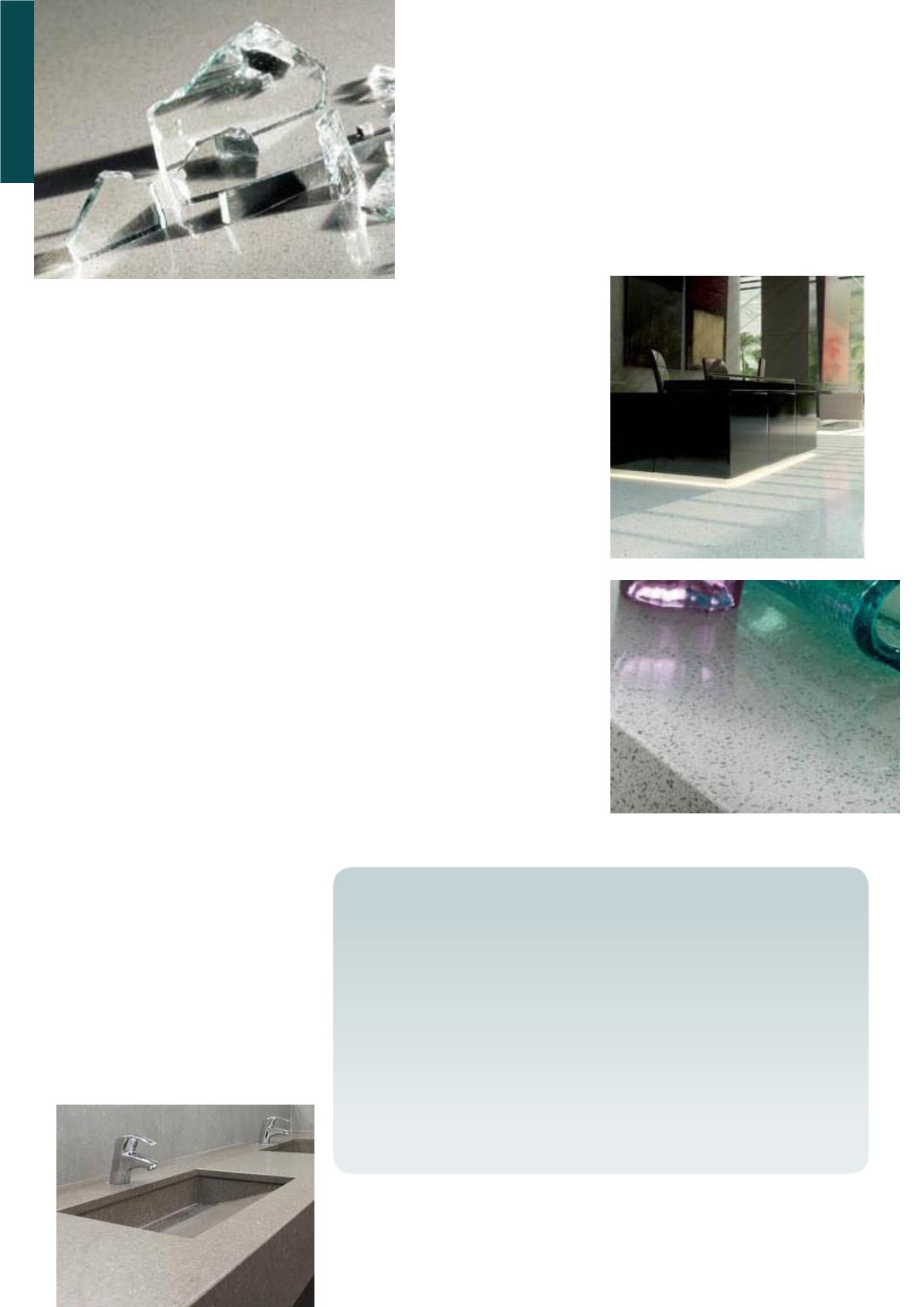

About glass
Glass is obtained through the fusion at a temperature of 1500ºC, of silica sand, so-
dium carbonate and limestone, which cools down and solidifies without experience
crystallisation.
•
Glass can be 100% recycled for an unlimited number of times.
•
FCC Ámbito’s plants feature the most advanced technology to eliminate im-
purities such as: metals, organic waste, paper, plastic, stones, ceramic, and
porcelain.
•
Crushed glass, known as scrap glass, must comply with all the quality requisites
demanded by glass factories.
acoustic insulation, in reflective spheres for
paintings, etc.
This fine glass is also used for abrasive
blasting of metallic materials, especially
stainless steel and other alloyed metals to
obtain metal surfaces with optimal polishing
and cleaning. It also has multiple applica-
tions in industrial, manual and traditional
crafts offering a translucent and coloured
material that can be applied in several artis-
tic expressions.
There are many other uses in artistic pain-
tings, in the smelting of different metals to
achieve special characteristics, in filters and
in decoration in general.
Furthermore, as a result of the more than 35
years in the glass recycling activity and the
commitment for continuous innovation, the
human team at FCC Ámbito has succee-
ded in developing new products with many
applications, including filtering glass for
cleaning swimming pool water as a result of
the CRISFILT R+D+I project, and the deve-
lopment of a new construction material with
high added value based on recycled glass,
developed in the REVICONS R+D+I pro-
ject, the resulting product of which is very
fine recycled glass that is used in the manu-
facturing of a special type of premium-class
kitchen countertops.
The Cadrete, Muel and Sagunto plants,
besides fine glass, also produce mixed
and industrial scrap glass. The first one is
the raw material used for manufacturing
new containers (bottles, flasks, jars, etc.).
The second one, industrial scrap glass, is
used to manufacture new glass products
(flat glass, pool tiles, etc.). The use of scrap
glass makes it possible to save energy, 1%
for each 4% of scrap glass introduced in
the furnace instead of sand. This also con-
tribute to reducing the emissions of CO
2
and other gases during the manufacturing
process.
Glass does not have just one life and
people are becoming increasingly aware
of this. The recycling habit should continue
and expand to take the most advantage of
this material and to contribute to reducing
contamination. In the future recycling other
materials, particularly plastic and paper,
should also become a habit.



















